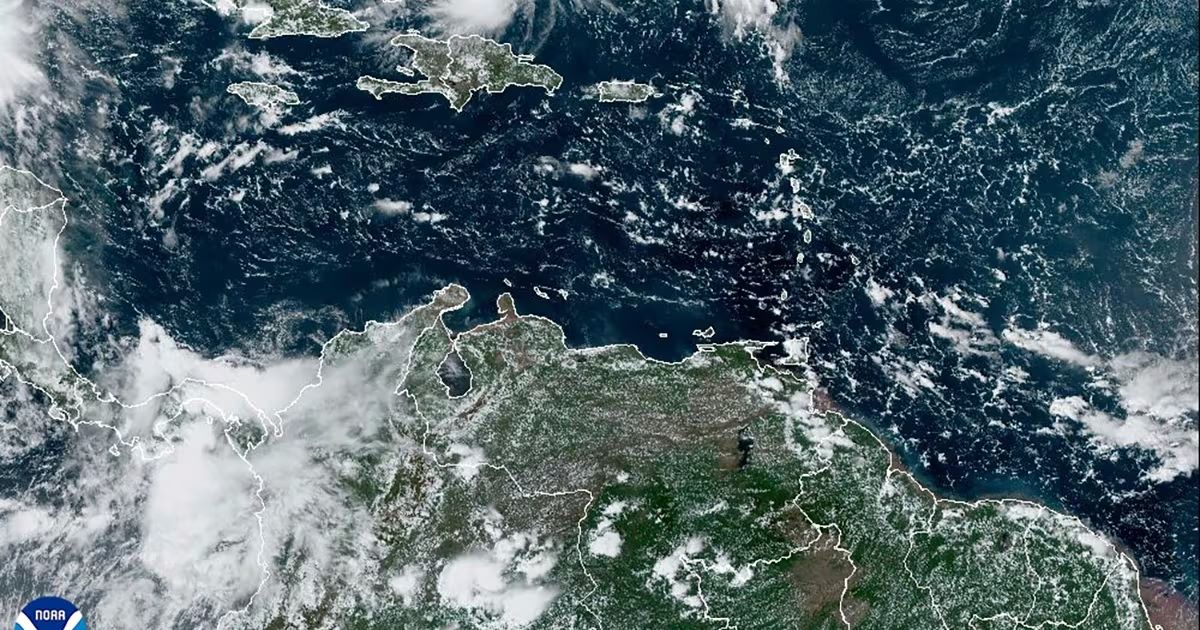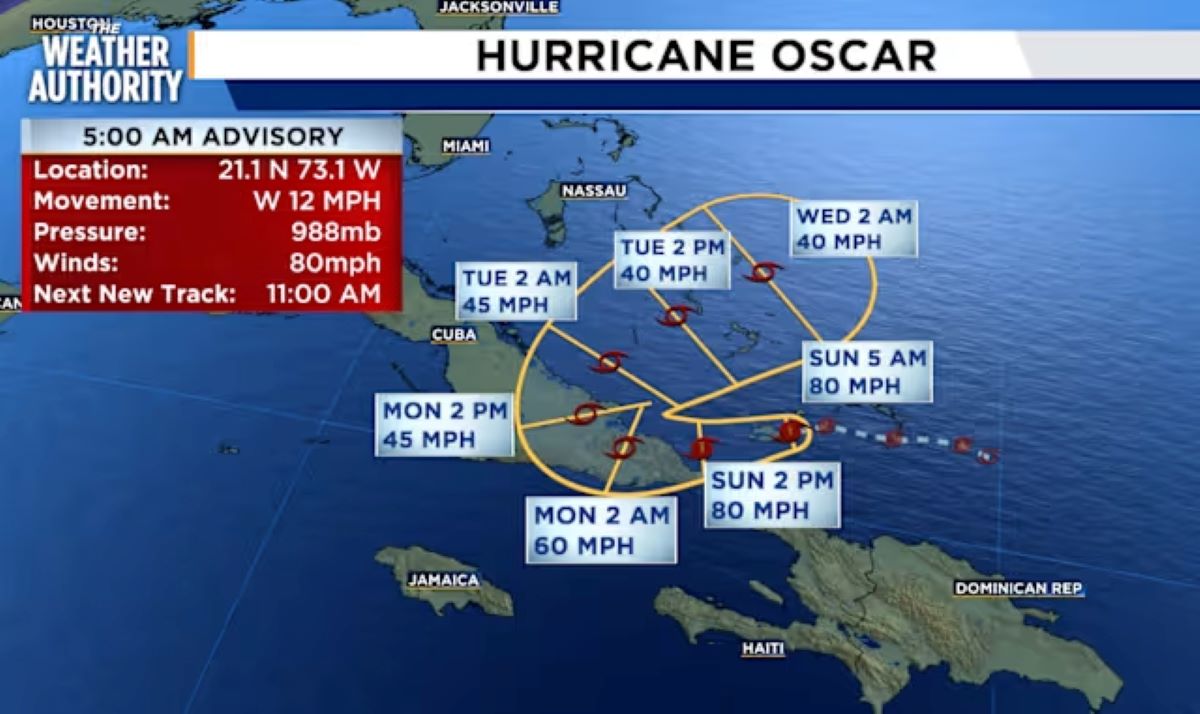A storm system in the Caribbean rapidly intensified on Saturday, transforming from a tropical storm into Hurricane Oscar, marking the 10th hurricane of the 2024 Atlantic hurricane season.
Forecasters announced that Oscar’s winds were stronger than initially expected, officially designating the system as a hurricane at 2 p.m. ET.
Oscar’s maximum sustained winds reached about 80 mph, with even stronger gusts—an “unexpected” development, according to forecasters. The hurricane may continue to strengthen on Saturday before gradually weakening next week.
While Oscar is not expected to directly impact the U.S., the National Weather Service in Melbourne, Florida, noted that East Coast beaches could experience indirect effects in the coming days due to a long-period swell generated by the storm.
Oscar’s rapid development also marked the eighth named storm to form since September 24, setting a new record for most named storms between September 24 and October 19, a record previously held since 1950, as noted by Phil Klotzbach, a senior research scientist at Colorado State University, on social media platform X.

Hurricane Oscar (Photo: NOAA)
Hurricane warnings have been issued for the Turks and Caicos Islands and the Southeastern Bahamas. Additionally, Cuba has issued hurricane watches for the provinces of Guantanamo, Holguin, and Las Tunas.
Hurricane Oscar surprised forecasters with its swift formation on the morning of October 19, 2024, becoming the 10th hurricane of the Atlantic season.
Meanwhile, Tropical Storm Nadine made landfall in Belize around noon ET on Saturday. The National Hurricane Center reported that Nadine’s maximum sustained winds were 50 mph by Saturday afternoon.
Tropical storm warnings were in effect for Belize City and surrounding areas, stretching from Belize to Cancun, Mexico, including Cozumel. With anticipated rainfall amounts of 4-8 inches, localized flash flooding is expected across southern Mexico, northern Guatemala, and northern Belize.
The hurricane center also warned that tropical storm conditions would persist along parts of the coasts of Belize and Mexico’s Yucatan Peninsula through Saturday afternoon, with isolated rainfall exceeding 12 inches possible through late Tuesday.
Nadine poses no direct threat to the U.S. As the storm moves inland, it is expected to weaken and likely dissipate over southeastern Mexico by early Sunday, according to the hurricane center.











































